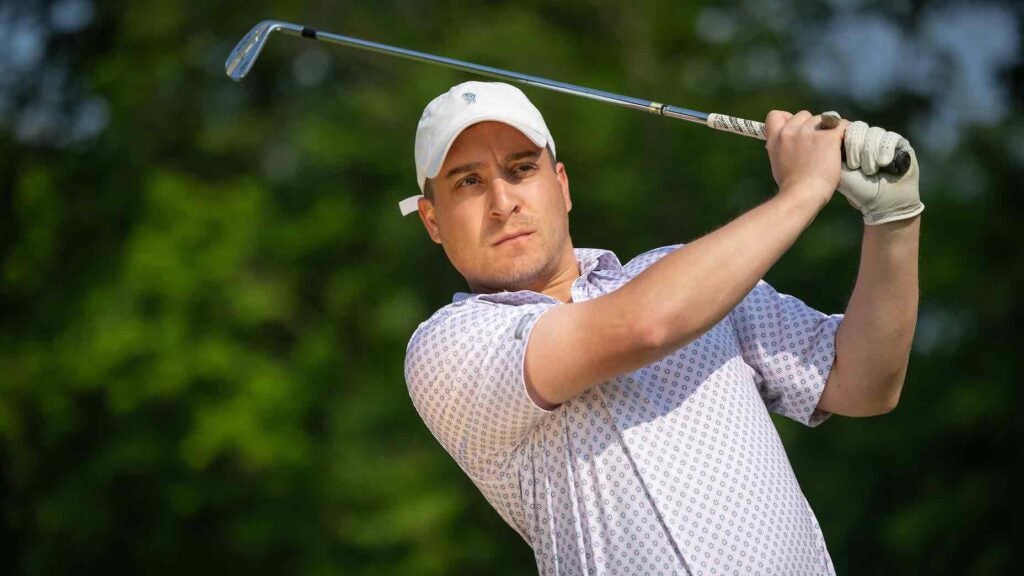More than three million players carry a USGA handicap. In a collaboration between GOLF and the USGA, we were able to identify five of the most improved golfers in America, who lowered it, percentage-wise, more than any other players in the past year. Each player is proof that there’s always a chance to shoot your dream score. Don’t have a handicap yet? Sign up for one right here.
***
ICYMI: How this amateur went from shooting in the 90s to breaking 80
ICYMI: How this college kid used a deal with his dad to lower his golf scores
ICYMI: How this high-handicapper shaved 13.5 strokes to win a local golf challenge
Eric Mastrull, 28, Flemington, N.J. / Handicap change: 1.3 to +1.3 (200% improvement)
There’s an old saying in life that “practice makes perfect.” For Eric Mastrull and his golf game, it hasn’t necessarily held true.
According to the longtime golfer, he didn’t need more time swinging the club; he just needed more time playing rounds.
“Toward the end of my high school career, I was playing some pretty good golf. I had gotten to around a +2 handicap, then my game kind of deteriorated… ’cause I didn’t play!”
With a basic understanding of fundamentals and his own swing, Mastrull says that the pandemic allowed him to get back to playing more golf — which allowed him to shave strokes.
“In the past, the inability to get into any sort of rhythm made it difficult to shoot good scores. I really think spending more time playing the game was a big factor last year.”
To be fair, Mastrull already had a head start on most rec golfers, moving the needle from a 1.3 handicap to a +1.3 in seven months.
“As I’ve gotten older, I’ve kind of settled into my muscle memory a little bit more,” he says. “I’ve realized that getting the ball in play off the tee and getting the ball pin high is really critical.
“If you’re serious and want to get better, you have to be willing to spend the time. Things don’t just come to you or don’t just happen because you want them to,” he says. “You have to make them happen. If a golfer is really looking to get better, they have to be willing to spend the time playing more rounds.”
With a new approach, Mastrull says he’s looking forward to more improvements this year.
“I think spending more time on the greens would be great over the course of this spring and summer, which will help me visualize certain shots during my rounds.”

